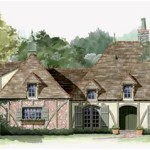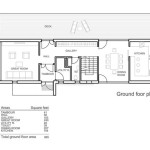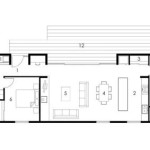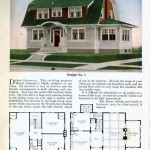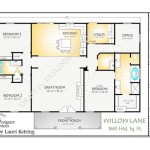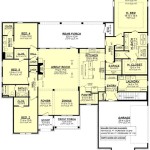Developing house plans involves creating blueprints and architectural drawings that outline the design and structure of a house. These plans serve as a roadmap for builders and contractors to follow during construction, ensuring that the final product aligns with the homeowner’s vision and meets all building codes and regulations. An example of house plan development is the blueprint for a 3-bedroom, 2-bathroom home with a garage and backyard patio.
The process of developing house plans typically begins with gathering requirements from the homeowner, including their budget, lifestyle, and desired features. The architect or designer then creates preliminary sketches and floor plans, which are then refined based on the homeowner’s feedback. Once the final plans are approved, they are used to obtain building permits and guide the construction process.
In this article, we will delve deeper into the steps involved in developing house plans, exploring the techniques and considerations that ensure a successful outcome.
When developing house plans, there are several key points to consider:
- Define requirements
- Gather inspiration
- Create preliminary sketches
- Refine floor plans
- Consider energy efficiency
- Optimize space utilization
- Ensure structural integrity
- Obtain building permits
- Coordinate with contractors
- Supervise construction
By following these steps and considerations, homeowners can develop comprehensive and successful house plans that meet their needs and aspirations.
Define requirements
Defining requirements is a crucial step in developing house plans that meet the homeowner’s needs and aspirations. This involves gathering detailed information about the homeowner’s lifestyle, budget, and desired features for their future home.
To effectively define requirements, homeowners should consider the following aspects:
- Number of bedrooms and bathrooms: Determine the number of bedrooms and bathrooms required to accommodate the homeowner’s current and future needs.
- Living space: Consider the desired size and layout of the living room, dining room, and other common areas.
- Kitchen layout: Plan the kitchen layout to ensure efficient workflow and adequate storage space.
- Outdoor space: Determine the need for outdoor living areas such as a patio, deck, or garden.
- Special features: Identify any special features or amenities desired, such as a home office, guest room, or home theater.
Homeowners should also consider their budget and timeline for the project. It is important to set realistic expectations and work with an architect or designer who can help create plans that align with the homeowner’s financial constraints.
By thoroughly defining requirements, homeowners can ensure that their house plans reflect their unique needs and preferences, resulting in a home that is both functional and.
Gather inspiration
Gathering inspiration is an essential step in developing house plans that are both aesthetically pleasing and functional. By exploring different design styles, floor plans, and architectural elements, homeowners can identify features and ideas that resonate with their personal taste and lifestyle.
- Browse home design magazines and websites: Home design publications and online resources offer a wealth of inspiration, showcasing a wide range of house plans and architectural styles. Homeowners can browse through these resources to gather ideas for the overall look and feel of their future home.
- Visit model homes and open houses: Visiting model homes and attending open houses allows homeowners to experience different floor plans and design concepts firsthand. They can observe how spaces flow together, evaluate the functionality of different layouts, and gather inspiration for interior design and finishes.
- Study architectural styles: Familiarizing oneself with different architectural styles can help homeowners narrow down their preferences and identify elements that they would like to incorporate into their house plans. From traditional styles like Victorian and Colonial to modern styles like Mid-Century Modern and Contemporary, there is a wide range of architectural styles to explore.
- Consider your lifestyle and needs: When gathering inspiration, it is important to keep in mind the homeowner’s lifestyle and needs. For example, a family with young children may prioritize open floor plans and durable materials, while a couple who loves to entertain may opt for a home with a spacious kitchen and formal dining room.
By gathering inspiration from various sources and considering their own lifestyle and needs, homeowners can create a comprehensive vision for their future home, ensuring that their house plans align with their aspirations and create a space that they will love for years to come.
Create preliminary sketches
Creating preliminary sketches is a crucial step in developing house plans, as it allows homeowners and architects to visualize and refine the design concept before moving on to more detailed drawings. These sketches serve as a foundation for the floor plans and elevations that will eventually guide the construction process.
To create preliminary sketches, homeowners can start by drawing simple floor plans that outline the basic layout of the house. These sketches should include the placement of rooms, walls, windows, and doors. It is helpful to use graph paper or a drafting program to ensure accuracy and scale.
Once the floor plans are complete, homeowners can begin to develop elevations, which are drawings that show the exterior appearance of the house from different sides. Elevations should include details such as the roofline, windows, doors, and any architectural features. By creating both floor plans and elevations, homeowners can gain a comprehensive understanding of the overall design and make informed decisions about the layout and appearance of their future home.
Preliminary sketches should be loose and freehand, allowing homeowners to experiment with different ideas and explore various design options. It is important to keep the sketches simple and focus on capturing the overall flow and proportions of the house. Homeowners can use tracing paper or light boxes to overlay different sketches and compare different design elements.
By creating preliminary sketches, homeowners can actively participate in the design process and ensure that their house plans reflect their unique vision and style. These sketches serve as a valuable tool for communication between homeowners and architects, helping to refine the design concept and lay the groundwork for more detailed drawings.
Refine floor plans
Refining floor plans is a critical step in developing house plans, as it allows homeowners to optimize the layout and functionality of their future home. After creating preliminary sketches, homeowners can work with an architect or designer to refine the floor plans, ensuring that they meet the homeowner’s specific needs and preferences.
One important aspect of refining floor plans is to consider the flow of traffic throughout the house. Homeowners should think about how they will move from room to room and how they will use each space. By carefully planning the flow of traffic, homeowners can create a house that is both comfortable and efficient.
Another important consideration when refining floor plans is the placement of windows and doors. Windows and doors should be positioned to maximize natural light and ventilation, while also providing privacy and security. Homeowners should also think about the views from each window and door, ensuring that they are aesthetically pleasing and complement the overall design of the house.
In addition to considering traffic flow and window placement, homeowners should also think about the size and shape of each room. Rooms should be large enough to accommodate their intended use, but they should not be so large that they feel empty or overwhelming. Homeowners should also consider the relationship between different rooms, ensuring that they flow together well and create a cohesive living space.
By carefully refining floor plans, homeowners can create a house that is both functional and beautiful. A well-designed floor plan will make the most of the available space, create a comfortable and inviting living environment, and enhance the overall value of the home.
Consider energy efficiency
In today’s world, energy efficiency is a major concern for homeowners. By incorporating energy-efficient features into their house plans, homeowners can reduce their energy consumption and save money on their utility bills. There are many different ways to improve the energy efficiency of a house, including:
Insulation: Insulation is one of the most important factors in determining the energy efficiency of a house. By adding insulation to the walls, roof, and floor, homeowners can reduce heat loss in the winter and heat gain in the summer. This can lead to significant savings on heating and cooling costs.
Windows and doors: Windows and doors are another major source of heat loss in a house. By choosing energy-efficient windows and doors, homeowners can reduce heat loss and improve the overall energy efficiency of their home. Energy-efficient windows and doors are typically made with double or triple glazing, which helps to insulate the home.
Appliances: When choosing appliances for their new home, homeowners should look for Energy Star-rated appliances. Energy Star-rated appliances meet strict energy efficiency standards, which can help homeowners save money on their energy bills.
Lighting: Lighting is another area where homeowners can improve the energy efficiency of their home. By using LED or CFL bulbs, homeowners can reduce energy consumption and save money on their lighting bills. LED and CFL bulbs are more energy-efficient than traditional incandescent bulbs, and they last longer.
By incorporating these energy-efficient features into their house plans, homeowners can build a home that is comfortable, affordable, and environmentally friendly.
Optimize space utilization
Optimizing space utilization is a key consideration when developing house plans. By carefully planning the layout of the house and choosing the right furniture and storage solutions, homeowners can make the most of the available space and create a home that is both comfortable and functional.
One way to optimize space utilization is to use multi-purpose furniture. For example, a coffee table with built-in storage can be used to store books, magazines, and other items. A sofa bed can be used for both seating and sleeping, and a dining table with leaves can be expanded to accommodate more guests.
Another way to optimize space utilization is to use vertical space. For example, homeowners can install shelves and cabinets on walls to store items that would otherwise take up floor space. They can also use loft beds to create additional sleeping space in a child’s room.
Finally, homeowners should carefully consider the size and placement of furniture. Oversized furniture can make a room feel cramped and cluttered. By choosing furniture that is appropriately sized for the space, homeowners can create a more open and inviting atmosphere.
By following these tips, homeowners can optimize space utilization and create a home that is both comfortable and functional.
Ensure structural integrity
Ensuring structural integrity is crucial in developing house plans to guarantee the safety and longevity of the building. Structural integrity refers to the ability of a structure to resist collapse or failure due to external forces such as wind, earthquakes, or the weight of the building itself.
- Foundation:
The foundation is the base of the house and plays a vital role in ensuring structural integrity. It must be designed to withstand the weight of the building and distribute the load evenly across the ground. Factors such as soil conditions, climate, and seismic activity must be considered when designing the foundation.
- Framing:
The framing, typically made of wood or steel, forms the skeleton of the house. It provides support for the walls, roof, and other structural elements. The framing must be designed to resist lateral forces such as wind and earthquakes, and it must be properly connected to the foundation.
- Walls:
The walls enclose the house and provide structural support. They must be designed to withstand both vertical and lateral loads. The choice of wall materials, such as wood, brick, or concrete, depends on factors such as strength, durability, and insulation value.
- Roof:
The roof protects the house from the elements and provides structural support. It must be designed to withstand wind uplift and snow loads. The choice of roofing materials, such as shingles, tiles, or metal, depends on factors such as durability, weather resistance, and aesthetic appeal.
By carefully considering structural integrity during the house plan development phase, homeowners can ensure that their home is safe, durable, and able to withstand the test of time.
Obtain building permits
Obtaining building permits is a crucial step in the house plan development process. A building permit is a legal document issued by the local government that authorizes the construction of a new building or the renovation of an existing one. The purpose of a building permit is to ensure that the proposed construction complies with all applicable building codes and regulations.
To obtain a building permit, homeowners must submit a set of plans to the local building department. These plans must include detailed drawings of the house’s foundation, framing, electrical system, plumbing system, and HVAC system. The plans must also be accompanied by a completed building permit application and the required fees.
The building department will review the plans to ensure that they meet all applicable building codes. The department may also require homeowners to make changes to the plans before issuing a building permit. Once the plans have been approved, the building department will issue a building permit.
It is important to note that building permits are typically valid for a limited period of time. If construction does not begin within the specified time frame, the building permit will expire and homeowners will need to reapply for a new permit.
By obtaining a building permit, homeowners can ensure that their house is built in accordance with all applicable building codes and regulations. This helps to protect the health and safety of the occupants and the community as a whole.
Coordinate with contractors
Once the house plans have been finalized and the building permit has been obtained, the next step is to coordinate with contractors to begin the construction process. The general contractor will be responsible for overseeing the entire project, from start to finish. The general contractor will hire subcontractors to perform specific tasks, such as framing, electrical work, plumbing, and HVAC.
It is important to have a clear contract with the general contractor that outlines the scope of work, the timeline for completion, and the payment schedule. The contract should also include a provision for change orders, which are modifications to the original plans that may be necessary during construction.
Once the contract is in place, the general contractor will begin the construction process. The general contractor will coordinate with the subcontractors to ensure that all of the work is completed on time and to the required standards. The general contractor will also be responsible for inspecting the work of the subcontractors and making sure that it meets the specifications of the plans.
Homeowners should be actively involved in the construction process and should communicate regularly with the general contractor. Homeowners should attend regular progress meetings to stay informed about the progress of the project and to discuss any changes that may be necessary. Homeowners should also inspect the work of the subcontractors to ensure that it meets their expectations.
By coordinating effectively with contractors, homeowners can ensure that their house is built according to their plans and that the construction process is completed on time and within budget.
Supervise construction
Supervising construction is a crucial aspect of developing house plans and ensuring that the finished product meets the homeowner’s expectations. It involves overseeing the construction process to ensure that it is completed according to the plans and specifications, within budget, and on schedule.
- Monitor progress and quality:
The homeowner should regularly visit the construction site to monitor the progress of the work and assess the quality of the construction. This includes checking that the materials used are of good quality, that the work is being done according to the plans and specifications, and that the workmanship is up to standard.
- Coordinate with contractors:
The homeowner should maintain regular communication with the general contractor and subcontractors to discuss any issues or changes that arise during construction. This helps to ensure that everyone is on the same page and that the project stays on track.
- Review invoices and payments:
The homeowner should review the invoices submitted by the contractors and make sure that they are accurate and reflect the work that has been completed. The homeowner should also make sure that payments are made on time to avoid any delays in construction.
- Conduct final walkthrough:
Once the construction is complete, the homeowner should conduct a final walkthrough with the general contractor to inspect the finished product and identify any defects or outstanding items. This helps to ensure that the house is completed to the homeowner’s satisfaction and that any issues are resolved before the final payment is made.
By actively supervising the construction process, homeowners can help to ensure that their house is built to their specifications and that the project is completed on time and within budget.










Related Posts

